The Saw franchise is one which kind of compels one to keep consuming each subsequent entry, wherever the reasoning falls between “I want to see what happens because I’m invested in the plot” all the way over to “I want to see what happens because why the hell not.” Look: nobody goes to see a Saw movie to fill in their Best of the Year list. We see Saw because it’s Saw: creatively gruesome violence, generally campy acting, and discovering how the writers will bullsh*t their newest twist into the overall canon. Binging the series makes it even better.
I love this franchise. It is, for its majority, very flawed. But damn it if it isn’t a ton of fun. With the release of the critically acclaimed(?!?) Saw X, I though this would be a great opportunity to update my ranking of the movies to see where they fall once again.
10. Saw IV
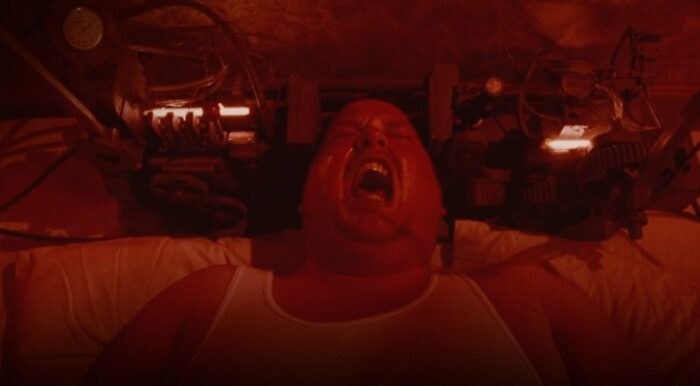
God, I love lists so much. I love them so much! I love organizing things, ranking them, and working through why. But if there’s one thing I hate, it’s lists. I get so wrapped up in what the real right ranking is, and making sure I don’t contradict myself. So it is with much pain and indecision that I state that Saw IV is the worst Saw. However, ask me again in a month and I will experience a sudden and significant anxiety spike and probably a new ranking.
I’ll be honest: Saw IV is almost so forgettable, I watched the whole thing without taking notes and the only thing I remembered vividly off-hand was Donnie Wahlberg getting his noggin crushed between two blocks of ice. One thing I had forgotten is the opening autopsy of Jigsaw himself, rendered in excruciatingly painstaking, gory detail as the dead serial killer is carved open. It is nasty and one hell of an opener to a movie that never rises back to that level of intensity.
The game, though: it essentially boils down to punishing a SWAT leader for wanting to save everyone. Sure, the guy might be obsessed with Jigsaw, but he also takes his job seriously and will selflessly dive headfirst into situations to save whoever he can. The fact that he’s punished for this, the under-utilization of Donnie Wahlberg, and the backstories of some of the other victims, makes Saw IV overall just unpleasant.
9. Jigsaw

Jigsaw boasts a visual slickness that dispenses with the anemic color palette and chaotic editing of most of the franchise and exchanges it for a surprisingly sharp visual style courtesy of the Spierig Brothers (Daybreakers, Predestination). However, you could employ the finest cinematography and technical polish of Joaquin Phoenix taking a dump, but that won’t affect the fact that you’re not enjoying the view.
The twist that plotlines presented in a linear fashion are actually occurring at two separate times was pretty cool in Saw II, but you can’t keep pulling that out and expecting the same reaction. Jigsaw even ripped off another stale twist from the franchise by presenting—surprise!—the fact that a main character was actually another Jigsaw apprentice! By this point it’s a pretty boring and unremarkable reveal, and this one doesn’t even really have that much bearing on the overall franchise canon or add anything to Jigsaw’s legacy. Jigsaw feels like a movie dipping its toe in the water to gauge interest in revitalizing the franchise, but it is neither innovative enough to work as a comeback, nor willing enough to unshackle itself from the past to work as a continuation. Not the worst movie in the series, but probably the least interesting/essential.
8. Saw V
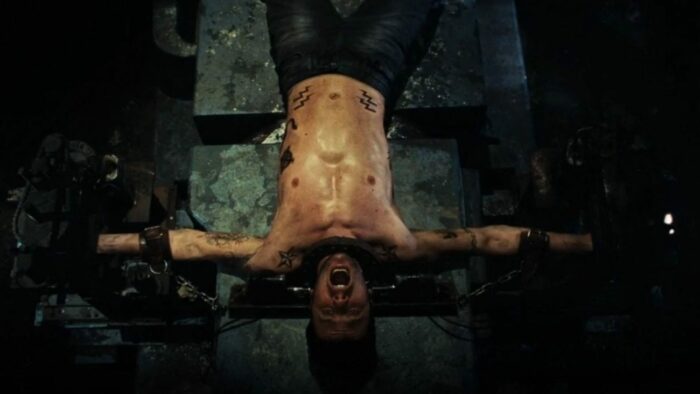
I warmed up a bit on Saw V after rewatching it, but not by much. It’s badly paced, there’s not really any major “twist” to speak of (ironic considering the movie’s tagline was “You won’t believe how it ends”), and the events and ramifications of the plot are relatively contained to the movie itself. The individual elements aren’t especially bad: the “game” finds several scumbags, in an escape room style series of traps, screwing each other over multiple times through traps that culminate in a predictable and satisfying reveal that they could have all been working together the whole time to save a great deal of suffering.
On the other side of things, the police are hot on the trail of a new Jigsaw copycat killer, who was revealed in Saw IV to be Detective Mark Hoffman (Costas Mandylor). Saw V pits Detective Strahm (Scott Patterson) against Hoffman, and their part of the story is basically their cat-and-mouse exchange. It’s a decent plot thread to see them pitted against each other, but the conclusion isn’t especially satisfying.
There’s also an irritating narrative element where at every junction of Strahm’s investigation he gets a voice-over of his thoughts. It’s an awful failure of conveying how he discovers new information. This one I just really didn’t have fun with.
7. Saw: The Final Chapter
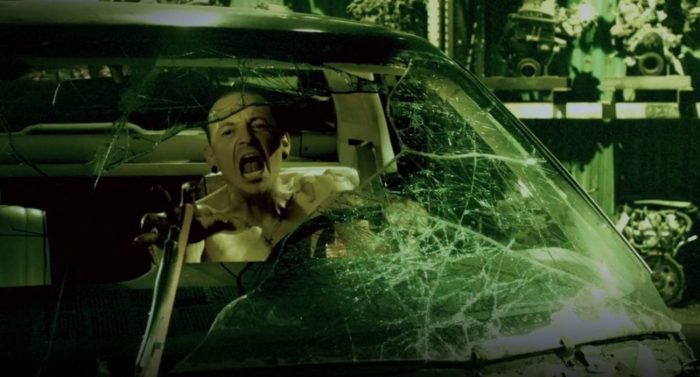
As “final” as any “chapter” in a horror franchise would ever be, Saw 3D (as it was in the theaters) makes a strong case to end the series, not in terms of narrative, but of quality. This movie is trash. But it’s hilarious. This is prime material for bunch of friends and a bigger bunch of alcoholic beverages. Cary Elwes, back for the first time since the original, hams it up every chance he gets. A large swath of the remainder of the cast don’t even possess porn-level acting chops, with highly amusing results.
The traps are absolutely uproarious at this point in how campy they are. Chester Bennington plays a white supremacist who gets superglued to the seat of a car set to tear his friends apart when the timer expires unless he tears himself off to reach forward and pull a lever (I dunno, maybe move the seat forward instead?). Moments later, a woman slaps a guy across the face and he falls onto a sea of upturned, running lawnmowers—both of them had been holding onto jagged bars cutting into their hands. One has to wonder how they actually got into that trap, since you can’t exactly wake up to discover you’re holding onto barbed wire above a bunch of lawnmowers. Logic absolutely does not matter here; you’ve watched every Saw movie so far and by god, you’re going to watch this one too, so who cares?
In fact, I have to wonder whether The Final Chapter’s full-bore absurdity has something to do with the writers wanting to use their “last” chance to absolutely blow the doors off this thing and explore every crazy idea they have. This is a bad movie, but I’m pretty sure, revisiting it now, that it knows exactly how stupid it is. One of the teaser posters depicted a construction project erecting a massive monument of Jigsaw himself. Gibson mentions that Jigsaw’s wife looks “crazier than a sack of cats,” which…doesn’t really make a lot of sense, but is spectacularly on-brand with the rest of the movie.
Ultimately, The Final Chapter surprisingly rescues itself from the bottom of the pack purely on how ridiculous and entertaining it is: a woman in a trap is told that raising the decibel level in the room will hasten her death via spears into the neck, and she immediately starts screaming bloody murder. And when she is inevitably killed by the trap, main character Bobby (Sean Patrick Flannery) angrily yells “WHY COULDN’T YOU JUST SHUT THE F*CK UP?”
At this point, the movies had been, for a few years, an annual event (I recall TV Spots growling “If it’s Halloween…it must be SAW”) so for the series to “go out” on such a level of excess doesn’t excuse that it’s still a really bad movie, but might explain why it’s so absurd and indulgent.
6. Spiral: From the Book of Saw
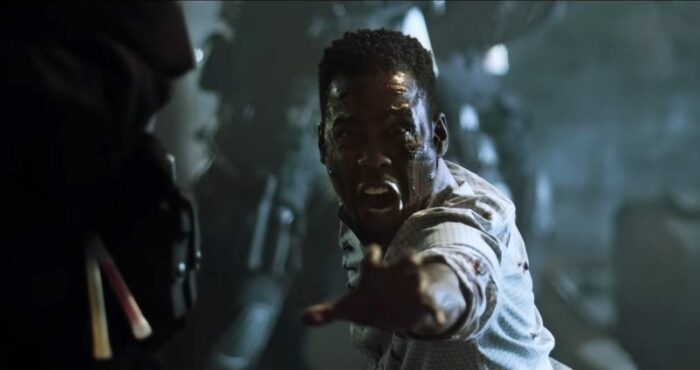
Stupid subtitle notwithstanding, I enjoyed Spiral quite a bit as my first trip back to the movies back in 2021. Chris Rock’s concept for a new direction for the franchise works well: a Jigsaw copycat killer is targeting the corrupt cops of a precinct, with the traps focused solely on punishment rather than rehabilitation.
Spiral feels more like something along the lines of Se7en than a standard Saw movie, operating much like a mystery-thriller with some ultra-violence sprinkled throughout. That’s not to say there is any shortage of violent traps—in fact, a couple of these factor among the more squirm-inducing of the franchise, and they’re spaced out just enough to balance well with the thriller elements.
Chris Rock is a great addition to the franchise. Rock brings his trademark comedic observations to the deeply cynical Detective Zeke Banks, and in the first half of the movie has some darkly funny lines. For his disappointingly limited screen time, Samuel L. Jackson is also a great presence as always, and his chemistry with Rock is excellent. This doesn’t make Spiral a comedy—while there are some laughs in the first half, the final stretch is as suspenseful and serious as anything in the series—though, truth be told, Darren Lynn Bouseman is back in the director’s chair, and as is not uncommon, there are definitely some moments intended to be serious that end up face-planting hilariously.
That twist, though: weak and completely obvious if you pay close enough attention to the cadence of the plot events (or, like, watched the trailer). However, the way everything ties together is far more satisfying than the twist itself, making for an ending that is still very effective. It was also pointed out to me that the true reveal doesn’t actually kick off until Charlie Clouser’s iconic “Hello Zepp” kicks in, which suddenly makes a lot of sense—the reveal is pretty obvious, but when the opening bars of “Hello Zepp” make themselves known, the final moments of Spiral effectively emulate the helpless surprise of the original film.
5. Saw III
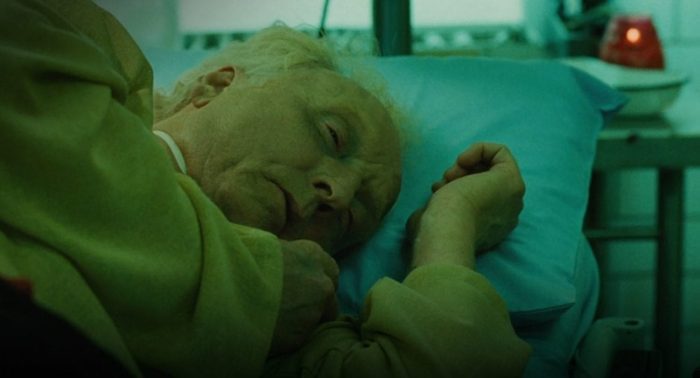
Saw III was where the series really started leaning into the nastiness of the traps, and indeed features some of the most inventively painful and cruel scenes of violence in the entire franchise. However, it’s also one of the most engaging in terms of the core conceit of the game, forcing a grieving father, Jeff (Angus McFayden) to confront each person connected to the case and choose whether to forgive them. One of his most important tests is to immolate his son’s treasured toys—toys which drove a rift between him and his daughter, as he forbade her to touch any of her brother’s belongings. Having the majority of the choices to be made coming from an emotional as well as a visceral place is a great idea and adds an additional layer of nail-biting tension: the victims, suffering through their trap, are bargaining, apologizing, and begging for mercy; Jeff, confronted with the anguished cries of the victim, their life in his hand, struggles to overcome his deeply rooted pain to forgive them. These moments are driven home by sudden flashes of old photos of Jeff’s son. In terms of intensity, Saw III wins by a country mile.
On the other side of the plot, we have Jigsaw on his deathbed, and how Amanda is reacting to her mentor on the verge of death. The way Jigsaw and Amanda interact is really interesting: Jigsaw has had an effect on Amanda and how she approaches her mortality, and clearly cares for her. Likewise, Jigsaw appears to be the first and only emotional anchor and father figure Amanda has ever had, and her emotional breakdowns as she grapples with Jigsaw’s final hours really cement their relationship. Out of all of the Jigsaw apprenticeships, hers is the most impactful: Jigsaw and Amanda have a genuinely and perversely nurturing relationship. The series so far has pulled no punches in showing that Amanda, as well as her mentor, are monsters, but seeing her fall apart watching Jigsaw slowly die oddly builds empathy for both of them—almost immediately before another flashback challenges those feelings. Saw III is just really well-paced, eventful, and thematically gripping—and that means something given how memorable those elements are alongside the most gruesome moments in the franchise.
4. Saw II
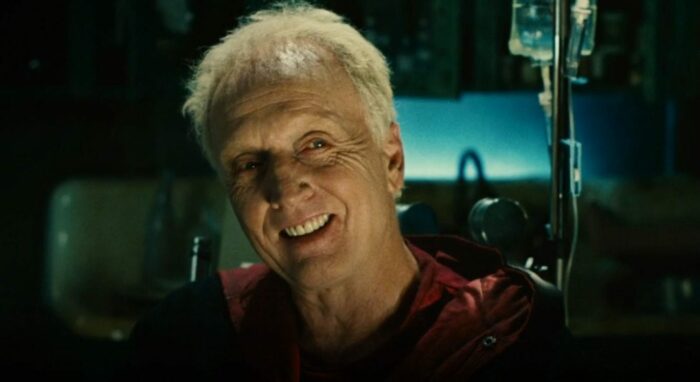
It’s very likely that the only trap more iconic than the original Reverse Bear Trap is the pit of needles. I will never not cringe at the moment when Amanda is hurled into the pit and emerges, screaming, with syringes poking out of her skin. It’s a squirm-inducing sequence and a standout trap in a terrifically-designed escape room-esque house of horrors. On the one hand, the format of placing two or more people in an enclosed space and watching them unravel is some of the best stuff in the series, but on the other hand, the fact that this isn’t the format in every single movie makes times like this all the more impactful and entertaining.
Saw II soars on the momentum that is Jigsaw himself, actively toying with with the cops—despite being in their custody, Jigsaw makes it very clear that he holds all of the cards. Dude’s got serious BDE, and is still revealed to be in control after getting his ass beat by Donnie Wahlberg. And to see Tobin Bell get significant screen time chewing the scenery is just sublime. It was such a good decision to follow his reveal at the end of Saw by making him a central focus of the sequel. It is abundantly clear that he holds all of the cards, and confining him in a room with a bunch of powerless cops is delightfully tense.
3. Saw VI

Saw VI suffered from some of the lowest box office numbers of the franchise, owed to the overall disappointment that was Saw V. It’s very much undeserved, as Saw VI is by far one of the most entertaining entries in the entire series. The movies so far have, to varying degrees, taken aim at one social issue or another, but Saw VI is searingly focused on the healthcare industry.
Insurance executive William is so proud of the formula he devised to make a choice on coverage—and, as Jigsaw puts it—makes to get the choice of who lives and who dies. As such, his game and its choices are focused on that choice. Each victim is a coworker complicit in their role in the healthcare industry, and each choice will end the life of one while sparing the other—with that choice involving William suffering severe physical and mental anguish. VI has some of the best traps of the entire series, mainly due to the schadenfraude of seeing these scumbags subjected to a twisted effigy of their own careers. And yet, these people know each other well enough that the decisions made and their effects have genuine impact. Director Kevin Greutert dials back the frantic pace of these traps in favor of tension, really drinking in his characters’ reactions to their situations.
Saw VI does a lot of other things right as well: the rivalry between Strahm and Hoffman has come and gone, with this entry finding Hoffman trying to stay one step ahead of the Jigsaw copycat investigation. The walls are closing in and part of the fun is seeing where the story actually goes now that Jigsaw himself is physically, definitively gone and the less meticulous, more impulsive and sloppy Hoffman has taken the reins.
It also has enough amusingly dumb moments that help counterbalance some of this entry’s heaviness: in the Pound of Flesh trap, a heavyset guy rips his shirt open to start carving into his belly fat, while the other victim starts to do the same only to react in dismay upon finding that she is too thin to be able to carve herself up. It’s hilarious to watch her look bizarrely surprised to find that she is extremely in shape with no belly fat to spare. Finally, it has one of the best pair of twists in the entire series, using surgically ambiguous phrasing to turn expectations on their head. It’s not impactful in terms of the overall canon, but on its own merits is a terrific series of unpredictable reveals that falls directly in line with the spirit of Saw.
2. Saw X
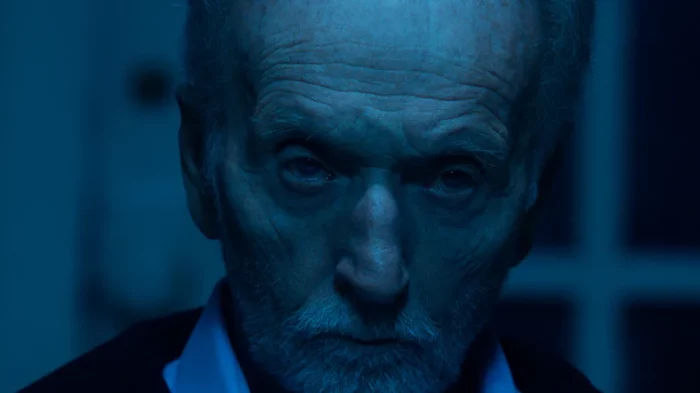
Uh…quite frankly, holy sh*t. We’re ten movies into a nearly two decades-long franchise, and not only is Saw X one of the best movies in the entire franchise, it’s a very entertaining movie in its own right. Taking place between the first and second entries, Saw X finds the cancer-ridden John Kramer/Jigsaw scammed by a bogus medical procedure, and placing those responsible into traps.
Over the course of the series, we’ve seen that Jigsaw is an extremely gifted civil engineer and very imaginative architect of some of the most horrific physical torture that the human body can be subjected to. And yet, Saw X successfully makes John Kramer, focal serial killer/spectre of the entire franchise, the protagonist of the movie–hell, for the first hour or so of the two hour movie, it’s essentially a drama with one trap towards the beginning. It is an absolute swing for the fences in terms of narrative choice to root for Jigsaw, and it pays off. For one, Kramer in non-Jigsaw mode give a glimpse into who he could have been had he not decided to become the serial killer. For another, Saw X effectively pits him against worse people: monsters who promise salvation and clean out their victims’ bank accounts before disappearing and leaving them with no money and no cure for their illness. These are people who, like the predator in Saw IV, you want to see fail their traps. We also see the return of Amanda (Shawnee Smith), and her interactions with Kramer offer some interesting insight into how their relationship changes between here and Saw III.
As for the traps, this entry delivery some spectacularly gnarly ones that really made me squirm. I guess I shouldn’t really spoil any of them too much here given how fresh the movie is, but I will say there were a couple where I would have expected the trap to end at a certain point, and instead that was just the first element of that trap and there is another element that takes things in even nastier directions.
When it comes to the trademark twist, this one once again isn’t entirely surprising: obviously, this being a prequel of sorts, John has to win, so the execution has to be there, and I am pleased to report that it is. The needle drop of “Hello Zepp” is as satisfying as it has ever been, and there’s a really cool visual callback to the original film’s shot of a bloodstained Jigsaw rising up.
Even at 82, Tobin Bell’s passion for this character shines in the best performance he’s given in the series so far. Saw X is the shot in the arm the series needed, and I can’t believe I’m looking forward to more if this is the level of quality we can expect.
1. Saw
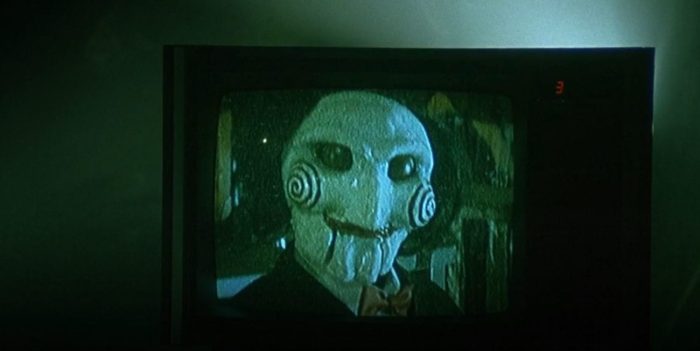
The OG is the best, right? Big Sawprise. Look, you’re not reading a Saw franchise ranking to see someone disagree with TRUTH. (Although I’d be lying if I said the final three entries on this list were not seriously neck-and-neck-and-neck).
For the first time in a decade, I rewatched James Wan’s original Saw. With the knowledge of what happens in the next few movies, I suspected I wouldn’t be terribly impressed. However, Saw remains, in its absolute own right, a really great thriller. For the first film in a franchise named as the advent of the modern “torture porn” subgenre, Saw is surprisingly light on gore, and much heavier on tension and mystery. Even if you remember all of the plot beats, the way the movie unfolds is still completely effective thanks to James Wan’s engrossing direction.
The premise is beautifully simple: two men are shackled to the pipes in a dingy bathroom. Where the escape room-esque story could go from there is delightfully unpredictable, owed to the creativity Wan and writer Leigh Whannell were forced to employ on a shoestring budget. It also feels in line with Trey Parker and Matt Stone’s writing advice to string storytelling beats together using “but” and “therefore” as opposed to the aimless “and then”—something that the weaker entries in the Saw franchise ironically fall victim to. Saw’s plot frequently reaches into the past via flashbacks, but it’s all in order to fill in details or recontextualize character beats in the present.
And of course, it was the film to debut Charlie Clouser’s “Hello Zepp” theme that would highlight the series-defining end reveals, those opening notes serving as the Pavlovian trigger to expect another wild twist. No matter how good, bad, stupid or all three the twist ends up being, that theme absolutely slaps and is an integral element to the intensity of the final moments of each movie. But Saw’s twist is a stone-cold classic: one of the absolute greats where the clues were all there, and when it finally drops, it’s an absolute holy sh*t moment that still hits even when you know it’s coming.
It works really well as its own self-contained movie, but throws out enough feelers to enable the behemoth of a franchise it grew to be. If I’m trying to sell someone on Saw, I’ll start by exclusively recommending this original.
So, do you agree or di-Sawgree with my rankings? I know the debates can get fierce when it comes to which movie is actually the worst (and why do we even argue about that?), but no matter what, I hope we can all agree that Saw is just a completely entertaining series. I, for one, cannot wait to see what follows Spiral, and with the way the franchise continues to crank out ticket sales, I don’t see that happening too far off.


